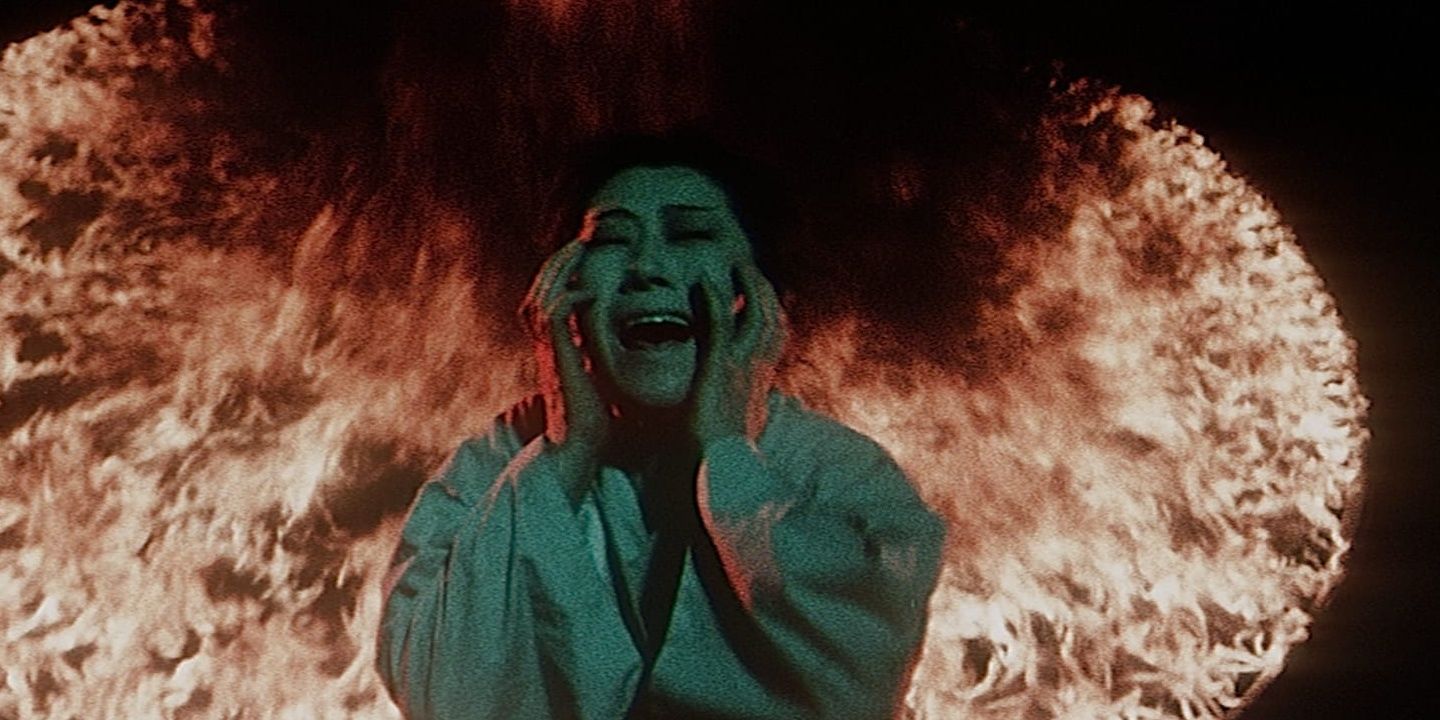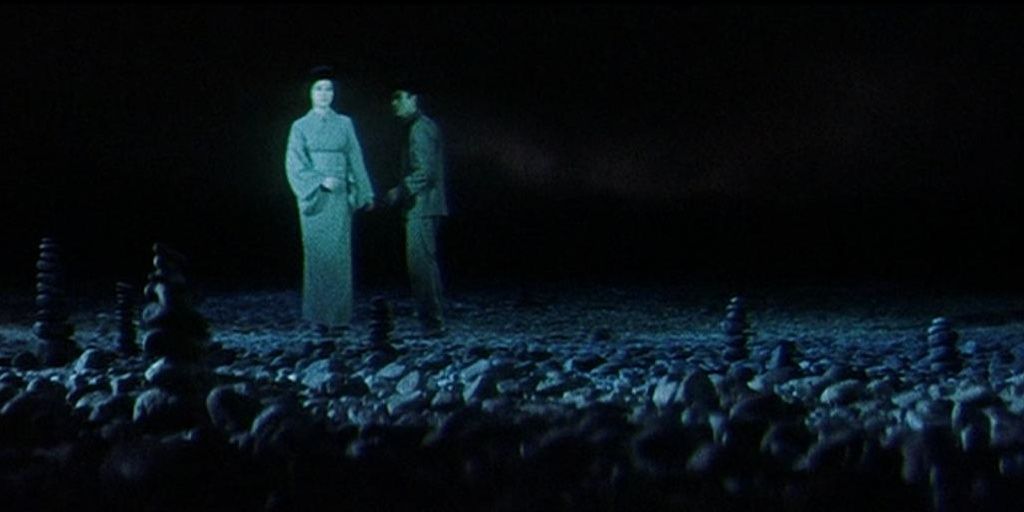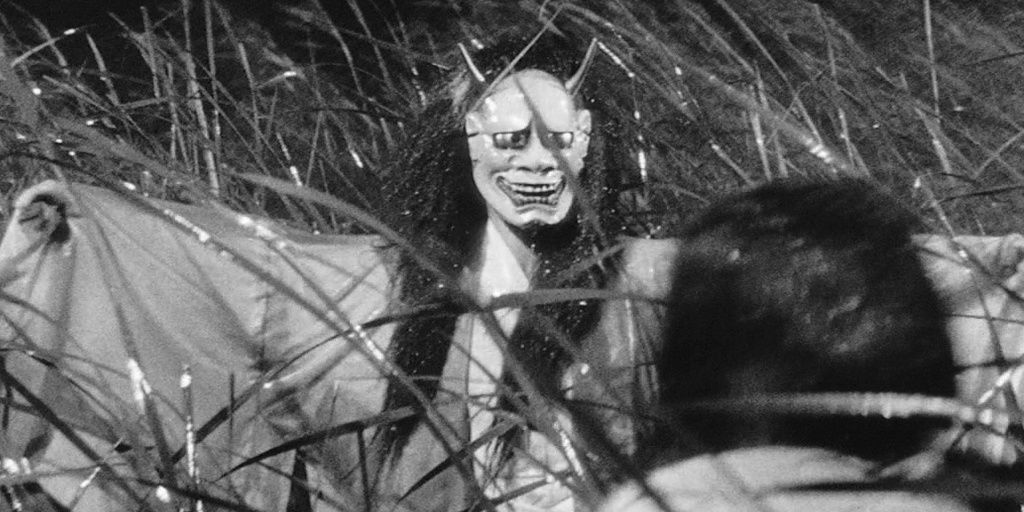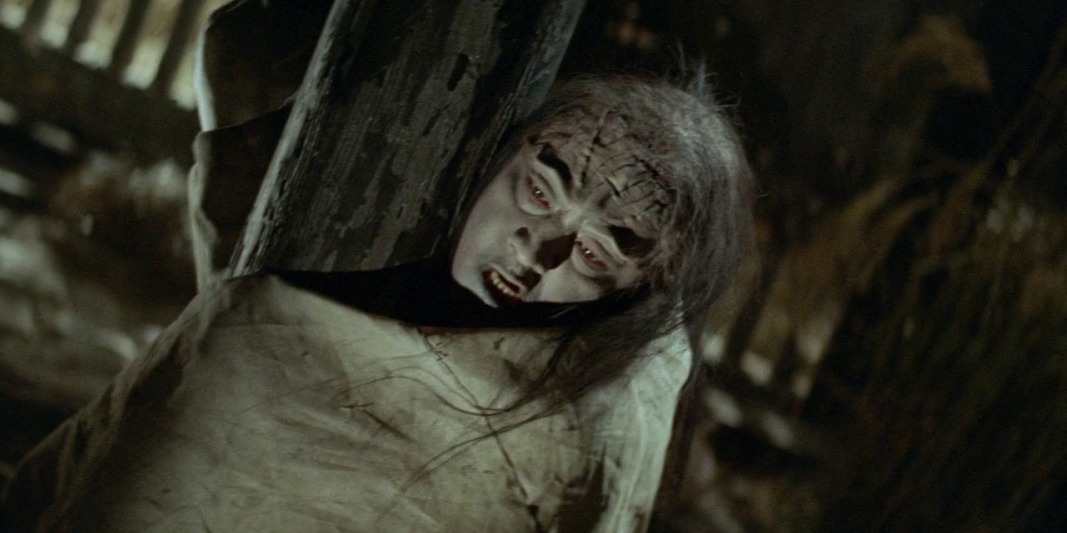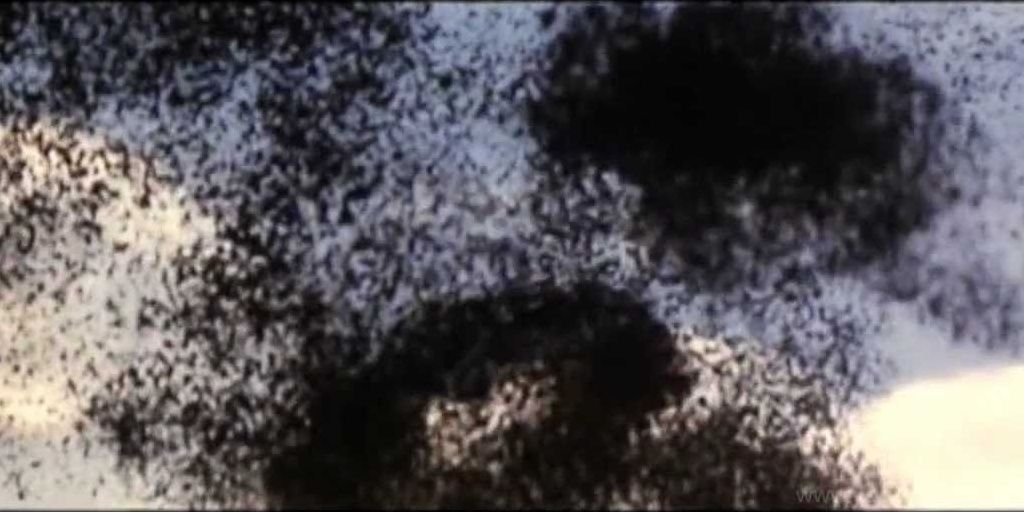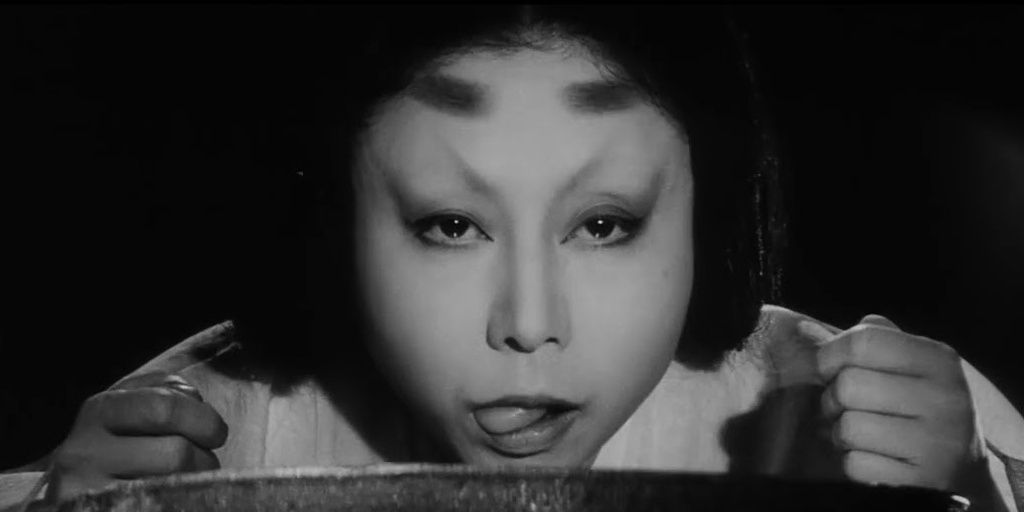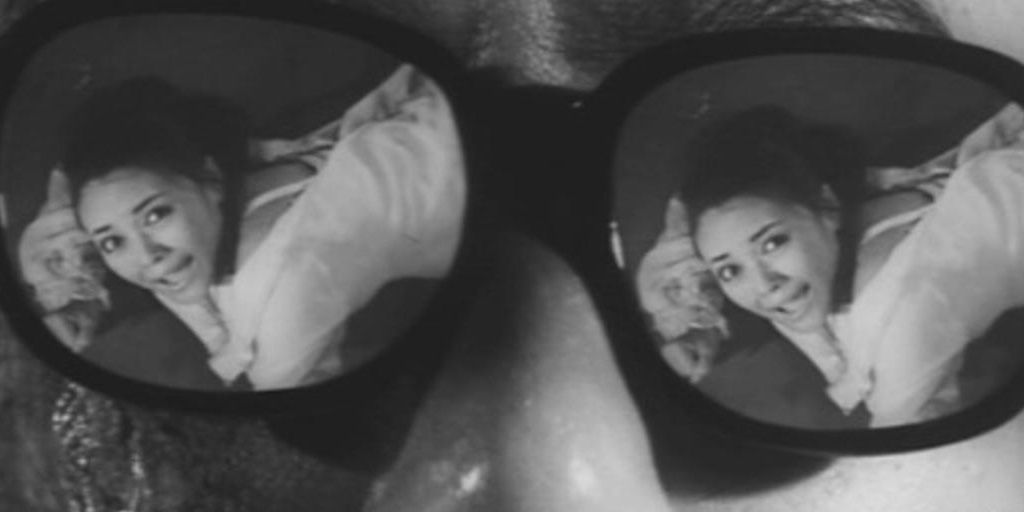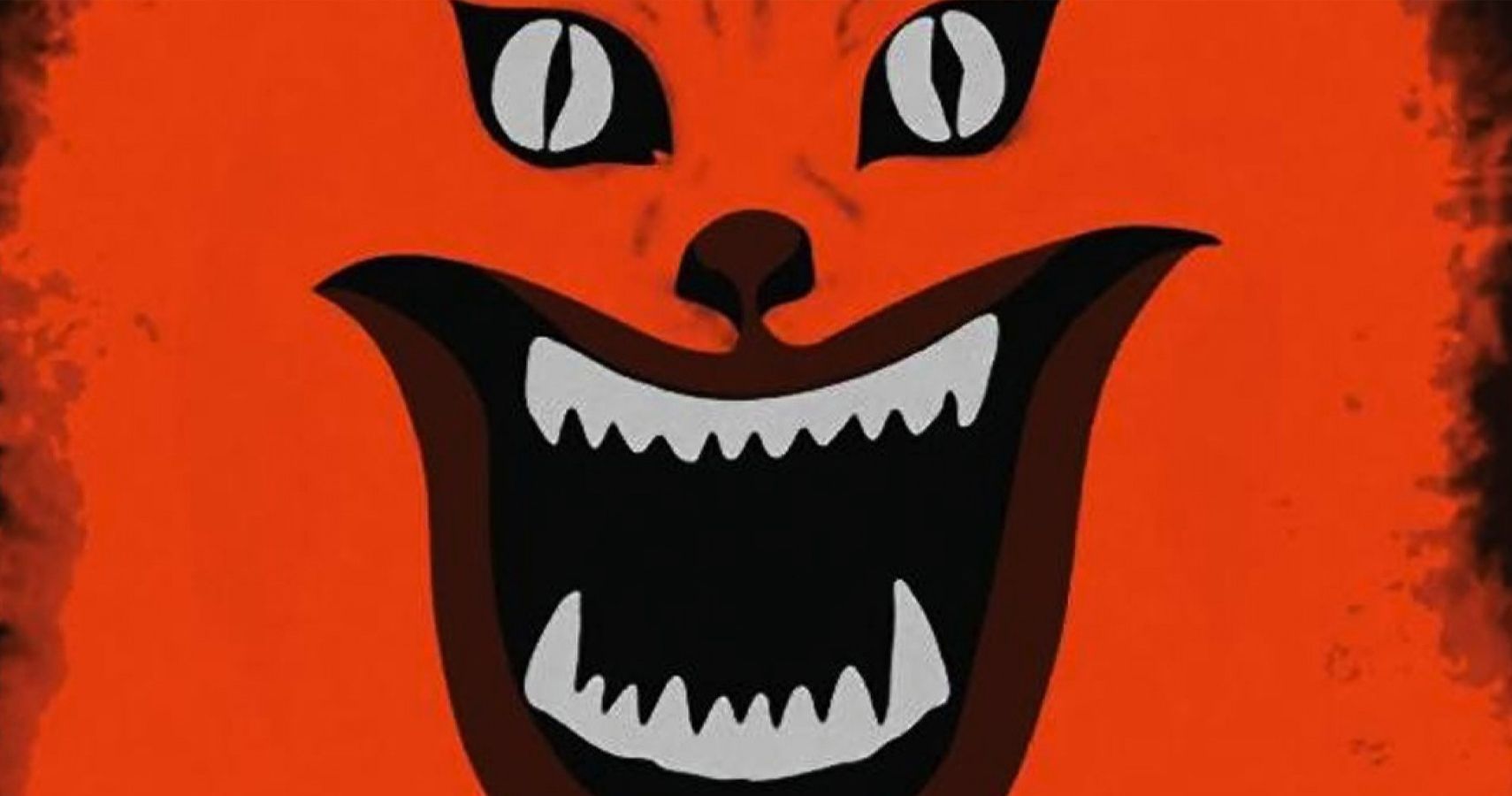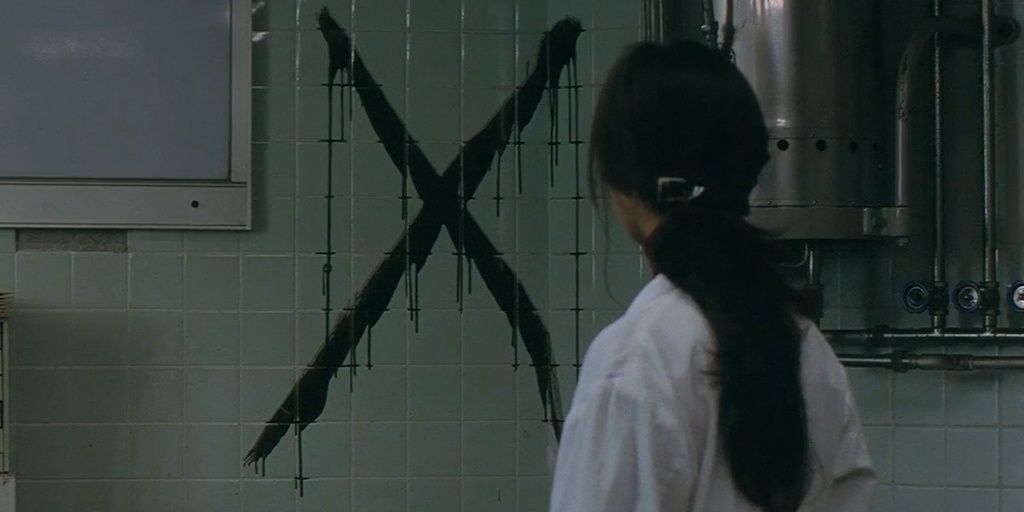Japanese horror is about more than lanky-haired girl ghosts and cursed technology. Though "J-Horror" as it's known in the West is a fairly recent phenomenon, the country has been churning out fright films since the silent era, going all the way back to 1926's A Page of Madness. For those interested in pre-millennial Japanese terror, The Criterion Channel has a wonderful selection just waiting to be discovered.
Tokaido Yotsuda Kaidan (1959)
A ruthless samurai (Shigeru Amachi) marries his wife under false pretenses. When she dies tragically, she exacts revenge from beyond the grave!
Also known as The Ghost of Yotsuya, the film is based on a 19th century Kabuki play. Director Nobuo Nakagawa is noted for his folktale influenced fright films, and Tokaido Yotsuda kaidan is considered the best rendition of this frequently adapted revenge story.
Jigoku (1960)
After fleeing a hit-and-run incident involving a yakuza gang leader, theology student Shirō (Shigeru Amachi) is tortured by his own guilty conscience. Torn between wanting to escape and seeking justice, he doesn't realize that the yakuza's mother (Kiyoko Tsuji) is lurking in the shadows, ready to send him to literal Hell.
Another film from Nobuo Nakagawa and his most well-known, Jigoku (a.k.a. The Sinners of Hell) plays like a somewhat forgettable crime drama before its indelible final act, which sees its cast subjected to the stylish and gory torments of Buddhist hell in a still unparalleled sequence of visionary suffering.
Onibaba (1964)
With her son off at war, a woman (Nobuko Otowa) and her daughter-in-law (Jitsuko Yoshimura) scrape out a miserable existence by trapping and fooling samurai who wander into their hovel. When the daughter in law begins an affair with a rough trade young man newly returned from battle, lust, anger, and jealousy threaten to tear their already tenuous lives to bits.
With searing cruelty, earthy eroticism, and one seriously scary demon mask, Kaneto Shindo's Onibaba remains one of the crown jewels of Japanese horror cinema.
Kwaidan (1966)
In four chilling vignettes adapted from traditional folk tales, a dirt poor samurai (Rentarô Mikuni) marries for money and gets more than he bargained for, a mysterious spirit (Keiko Kishi) rescues a man from a blizzard for a price, a blind musician (Katsuo Nakamura) is frightened to discover that his audience is made up of ghosts, and an author, (Osamu Takizawa) retells a tale about a samurai who sees another warrior's face reflected in his tea.
Masaki Kobayashi turned to horror after ten years of political and period dramas to craft this stately and gorgeously designed meditation on Japanese folklore.
Genocide (1968)
In Kazui Nihomatsu's disaster picture, a plane carrying an H-bomb is downed by a swarm of killer bugs. Seeking answers, a group of military personnel uncover a nasty insectoid plot that may doom the entire planet.
From the country that produced Ishirō Honda and Godzilla, Genocide proves once again that nobody creates a gut-churning doomsday picture quite as effective as the Japanese.
Kuroneko (1968)
In feudal Japan, a group of samurai force their way into the home of Yone (Nonuko Otowa) and her daughter, Shigei (Kiwako Taichi), where they abuse and murder them. Doomed to haunt the forest as malevolent, catlike spirits who rip out the throats of wandering samurai, the two women meet their match in a military hero who may be more noble than their usual prey.
A worthy follow up to Onibaba, Kaneto Shindo's moonlit folktale boasts a feminist heart as well as stunning special effects and cinematography.
The Living Skeleton (1968)
Three years after a group of pirates commander a ship and execute its crew, a Catholic priest (Masumi Okada) offers to shelter a young woman (Kikko Matsuoka) whose sister has been lost with her husband at sea. But when the ransacked ship turns up, the priest and his young charge have a true-blue haunting on their hands.
Hiroshi Matsuno's widescreen marvel is an atmospheric tale of vengeance from the briny depths
Under the Blossoming Cherry Trees (1975)
A bandit (Tomisaburo Wakayama) kidnaps a woman (Shima Iwashita) to add her to his harem of "wives." When she arrives at his mountain home, she insists that he murder the rest of his concubines. After obliging and beheading the women to appease his strangely persuasive new bride, he is driven to increasingly cruel and violent crimes to keep her happy.
A gruesome fairy tale for adults from Masahiro Shinoda, Under the Blossoming Cherry Trees is a slow-burning portrait of an all-consuming, mad love.
House (1977)
Gorgeous (Kimiko Ikegami) heads to her aunt's mansion retreat with her six close friends in tow, only to find that a creepy supernatural force has taken over. As the girls investigate, pianos come to life, severed heads emerge yammering from wells, and the fur (and blood) starts to fly thanks to an evil portrait of a fluffy white cat.
A horror comedy unlike any other, director Nobuhiko Obayashi based his script on ideas from his young daughter, Chigumi, lending House a childlike sense of wicked absurdity. If the Scooby Gang dropped substances and bit down on a live telephone wire, their shared hallucination would look something like House.
Cure (1997)
When various unconnected people each confess to a series of strange killings in which an X has been carved into each of the victim's throats, Detective Takabe (Koji Yakusho) becomes determined to uncover the truth.
Most famous for his J-Horror masterpiece Kairo (a.k.a. Pulse), Kiyoshi Kurosawa's earlier effort has been similarly celebrated for its frightening ambiguity and palpable sense of clammy doom.
NEXT: 10 Classic Movies Everyone Should Stream on The Criterion Channel Now

